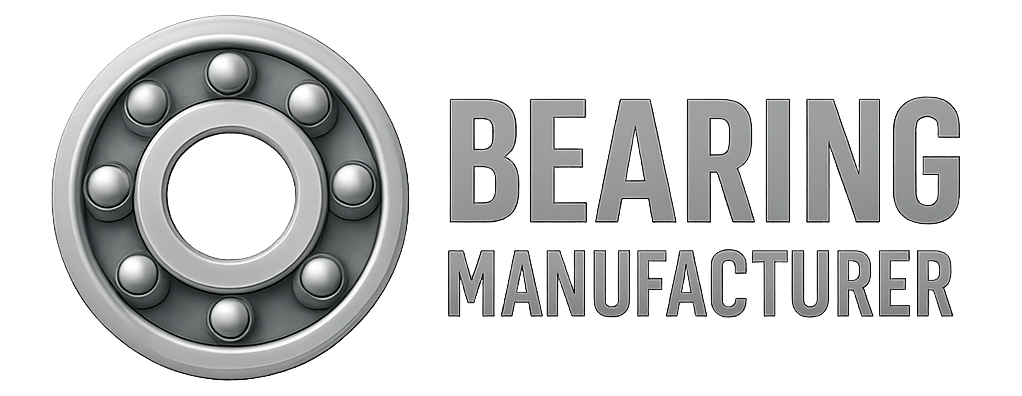Bearing numbers are more than just product labels — they are a technical language used globally to classify, specify, and differentiate bearings across brands and applications. By understanding how to decode bearing numbers, engineers and procurement specialists can select the right bearing with precision, even across different bearing manufacturers.
✅ Tip: Most bearing codes follow a similar logic, especially those adhering to ISO and DIN standards, though some differences still exist across brands like SKF, NTN, NSK, and FAG.
📘What Is a Bearing Number?
A bearing number typically encodes information about:
-
Bearing type
-
Load and performance series
-
Bore (inner diameter)
-
Special design features such as seals, clearance, and materials
Even if there’s no unified global standard, most mainstream manufacturers use a similar coding system. Understanding this system can significantly speed up product identification and replacement.
🧩Basic Structure of a Bearing Number
A typical bearing number consists of three parts:
-
Prefix – indicates special features or materials
-
Basic Designation – includes bearing type, series, and bore size
-
Suffix – covers seals, cages, clearance, tolerances, etc.
Example:TS2-6206 LLB C3 P5/2AS
-
TS2: Prefix (heat stabilization up to 160°C) -
6206: Basic Designation -
LLB,C3,P5,2AS: Suffixes
🔍Decoding the Basic Designation: 6206
1️⃣ First Digit – Bearing Type
The first digit tells you the bearing type:
| Digit | Bearing Type |
|---|---|
| 1 | Self-Aligning Ball Bearing |
| 2 | Spherical Roller Bearing |
| 3 | Double Row Angular Contact Ball |
| 4 | Double Row Ball Bearing |
| 5 | Thrust Ball Bearing |
| 6 | Single Row Deep Groove Ball Bearing |
| 7 | Angular Contact Ball Bearing |
| N | Cylindrical Roller Bearing |
| R | Inch Series Bearing |
| QJ | Four-Point Contact Ball Bearing |
| BK/HK | Drawn Cup Needle Roller Bearing |
| NA/K | Needle Roller Assemblies |
➡️ In 6206, 6 means it is a single row deep groove ball bearing — the most common type.
2️⃣ Second Digit – Series / Load Capacity
This digit indicates the bearing series (robustness and cross-sectional size):
| Digit | Series Description |
|---|---|
| 0 | Extra Light |
| 1 | Extra Light Thrust |
| 2 | Light |
| 3 | Medium |
| 4 | Heavy |
| 8/9 | Thin Section Bearings |
➡️ In 6206, 2 means it’s part of the light series.
3️⃣ and 4️⃣ Digits – Bore Size (Inner Diameter)
For codes ≥04, bore = last two digits × 5 mm.
| Code | Bore (mm) |
|---|---|
| 00 | 10 |
| 01 | 12 |
| 02 | 15 |
| 03 | 17 |
| 04 | 20 |
| … | ×5 rule |
➡️ In 6206, 06 = 6 × 5 = 30 mm bore.
🔧Prefixes – What Comes Before the Numbers
Prefixes indicate special materials, coatings, or designs. Here’s a summary from major brands:
🔹NTN Prefixes
| Prefix | Meaning |
|---|---|
| (none) | Standard steel, up to 120°C |
| TS2 | Heat-stabilized to 160°C |
| TS3 | Up to 200°C |
| TS4 | Up to 250°C |
| 5S | Ceramic rolling elements |
| 7MC3 | MEGAOHM® insulation coating |
| F | Stainless steel (AISI 440C) |
| N | Beryllium Copper |
🔹SKF Prefixes
| Prefix | Meaning |
|---|---|
| D/W | Double bearing, stainless steel |
| ICOS | Sealed unit |
| W | Stainless steel (metric) |
| WBB1 | Non-standard ISO dimensions (metric) |
🏷️Suffixes – What Comes After the Numbers
Suffixes indicate important design variations. These can affect the bearing’s performance, durability, or fit in an application.
Common Sealing Suffixes
| Suffix | Description |
|---|---|
| RS | Rubber seal (1 side) |
| 2RS | Rubber seals (both sides) |
| Z | Metal shield (1 side) |
| 2Z / ZZ | Metal shields (both sides) |
| LLB | Non-contact rubber seals (NTN) |
| VV | Non-contact seals (both sides, NSK) |
| DDU | Contact seals (both sides, NSK) |
Other Typical Suffixes
| Suffix | Meaning |
|---|---|
| C3 | Internal clearance greater than normal |
| P5 | Higher precision (ISO class) |
| 2AS | Special lubrication or treatment |
✅ Note: Suffixes vary by manufacturer. Always refer to specific brand catalogs for exact definitions.
🔎How to Accurately Identify Bearings
-
Use a cross-reference table to match codes across brands.
-
Confirm the full part number — not just the digits.
-
Double-check unusual or older codes (some older bearings may follow legacy naming).
-
Avoid assumptions — similar numbers can have different specs across brands.
-
Consult suppliers when in doubt, especially with suffixes or exotic materials.
🧠Conclusion
Reading and identifying bearing numbers doesn’t need to be a mystery. By understanding how prefixes, base codes, and suffixes work together, you can confidently specify or replace bearings for nearly any application.
Whether you’re maintaining industrial machinery or sourcing parts for OEM builds, this knowledge empowers better, faster, and more reliable decisions.
